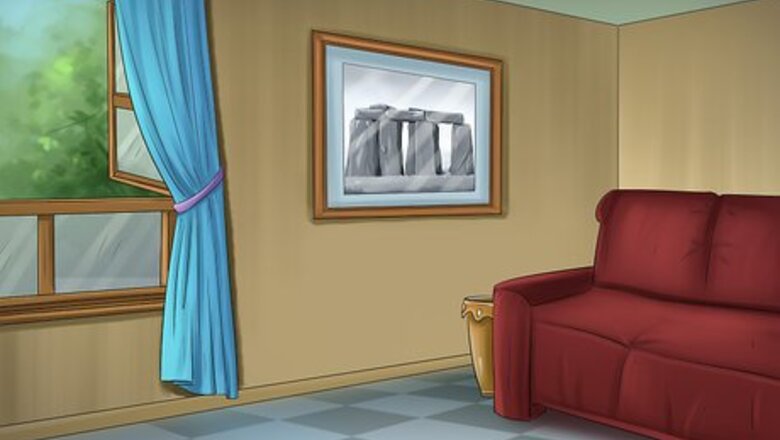
views
Preparing for Construction
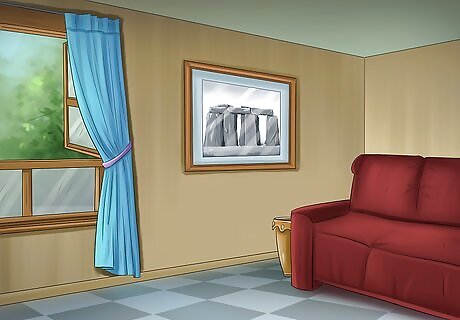
Find an appropriate location in your home. You will need to find a large space in the house to fit the tank. Measure it out to determine how much space you have available. Try to find a place that will suffer less damage if there is any sort of leak, that is easy to clean, and where the turtle can reside for a long time. If possible, you should also pick a site that will allow your turtle to get some natural light.

Determine the size of the pond. Keep in mind the amount of space for the location chosen in the house and that there will be a frame built for the pond to sit in, which will also serve as a basking/land area.
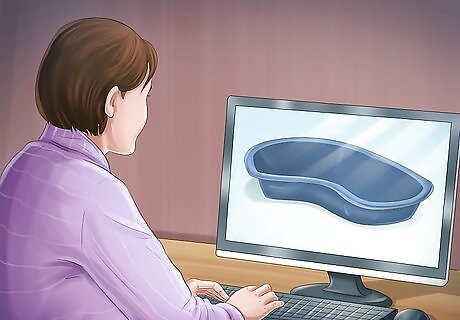
Find a surface mount pond. Surface mount ponds cost $30-$90 and are available for purchase online. You will want to purchase one slightly smaller than the space you have allotted for the pond, because you will also want to build a frame and basking area so that your turtle can leave the water occasionally.

Purchase a liner. If you prefer not to get a pond, you can also purchase a large, water resistant liner. There is, however, a slightly greater possibility that a turtle could use its claws to puncture a liner.
Building the Pond
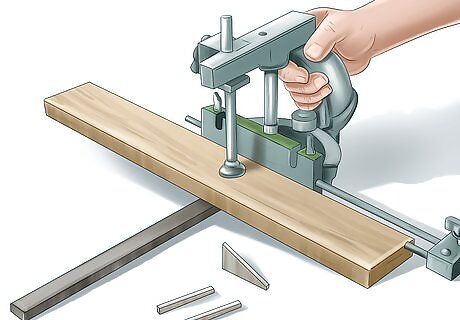
Cut two-by-fours. Purchase several two-by-fours verifying that they are all of the same dimensions. Use a miter gauge to cut the wood into the dimensions that you measured out. Set up a gauge block to the appropriate length so that all of your boards will be cut to the same length. You will need a large work space with proper tools for this work. A large garage is appropriate.

Build the frame. Nail together beams to form two rectangles, one for the bottom and one for the top of the frame. Connect the two rectangles with support beams. Install one support beam for every foot of the perimeter of the rectangular frame. To bind the planks together, put wood glue on the edge and press together. Hold them together with bar clamps. Then nail several nails into the corner to hold them into place.

Measure the pond. You will want to see how much wood is necessary to hold the lip and the bottom of the pond in place. Cut wood appropriately and nail into place along the rectangular frame.
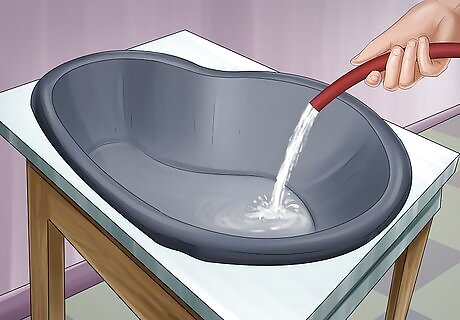
Place pond in the frame. Fill with water to check for leaks and see how the pond fits in the frame. The pond may fit differently with water in it and adjustments may need to be made. Do not wait to fill pond with water until it is in the home. You can empty this water out before moving the pond into position. It is just to check for leaks.

Add a barrier around the basking area. The basking area can be of any size or shape. You will want to ensure that the turtle does not fall off the landing. Nail in a wooden enclosure around the perimeter of the basking area. Hardware stores sell small fences that could be nailed into the edge of the landing. Be sure that the barrier is significantly taller than your turtle. Providing an area for your turtles to bask is important. Turtles regulate their temperatures, elevate their metabolism and increase the efficiency for their immune and digestive systems by basking.
Making the Pond a Home
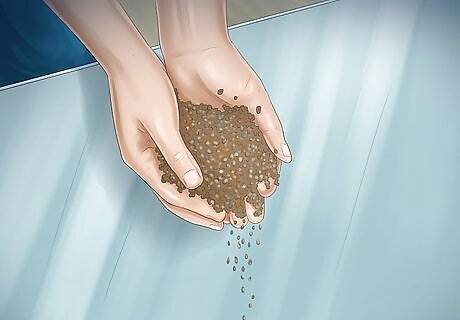
Fill the pond with substrate. Sand and fine gravel are generally considered the best substrates. Standard gravel can be dangerous because turtles are known to eat it. A deeper coral sand substrate can be substituted for soft-shell turtles.
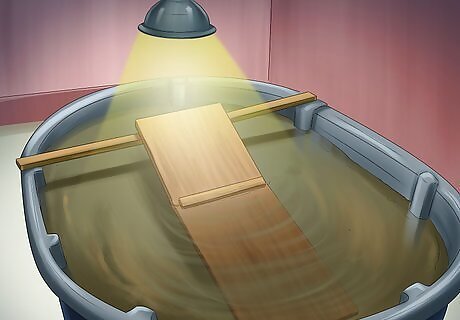
Build a ramp. You should provide some way for your turtle to walk up onto the basking area. Consider cutting a couple of two-by-fours and nailing them in to serve as a ramp. Alternatively hardware cloth or poultry netting can be attached to the pond, providing a ladder. Nailing shingles to the ramp can make it easier for your turtle to climb up.
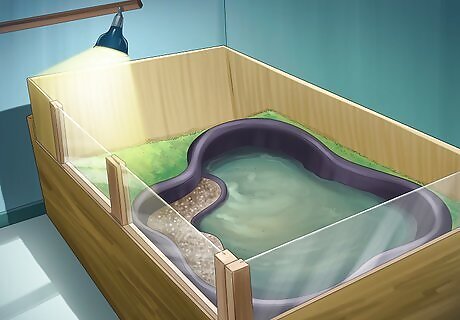
Install a basking lamp. In the outdoors, turtles leave the water to get into the warm sun. The lighting you provide serves as a substitute. You will want to make sure that the lighting is positioned correctly above the basking site. A UVB 2.5 lamp is usually 12 inches (30.5 cm) above the basking site and a UVB 5 lamp is usually about 18 inches (46 cm) above the basking site. The basking area should only be 10 °F (−12 °C) warmer than the water temperature to encourage basking. Areas that are too hot may discourage the turtle from basking or risk exposing the turtle to hyperthermia. Use a thermometer to check the temperature of the basking area and adjust the placement of the lamp accordingly.
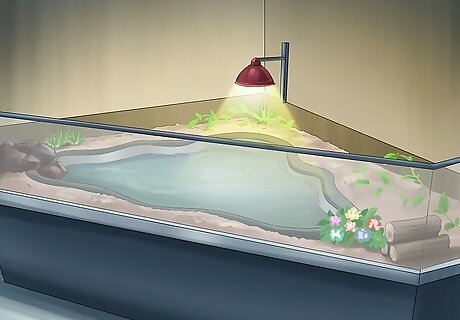
Add plants and other decorations. To make the aquatic pond more homey, you can add artificial or live plants such as water lettuce, water hyacinth or duckweed. Decorations such as wooden logs or artificial rocks also provide a personal touch. Be mindful not to include any plants that turtles are allergic to. Some common plants that are toxic to turtles are: azalea, christmas rose, daffodil, iris, ivy, jimson weed, mistletoe, morning glory, nightshade, and tobacco.










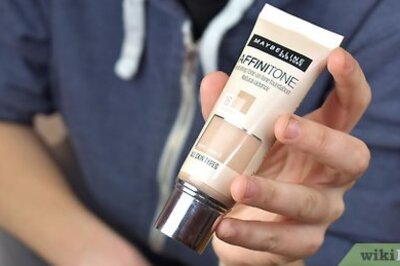




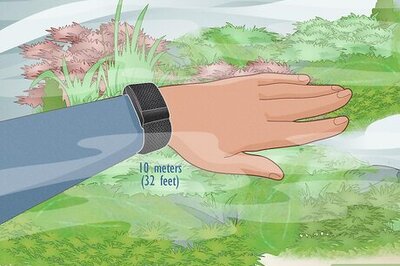
Comments
0 comment